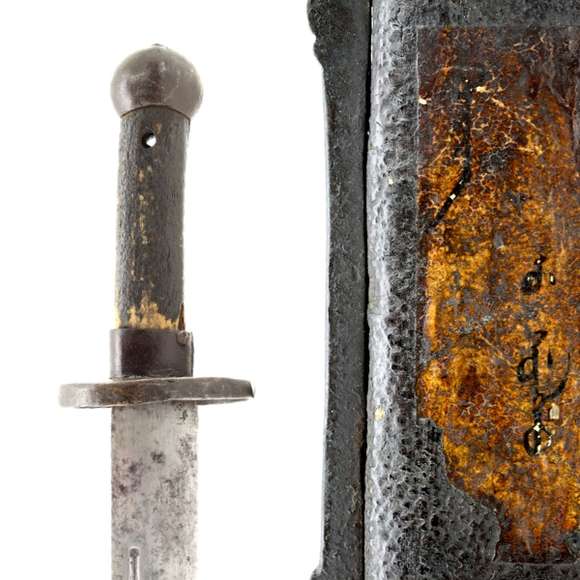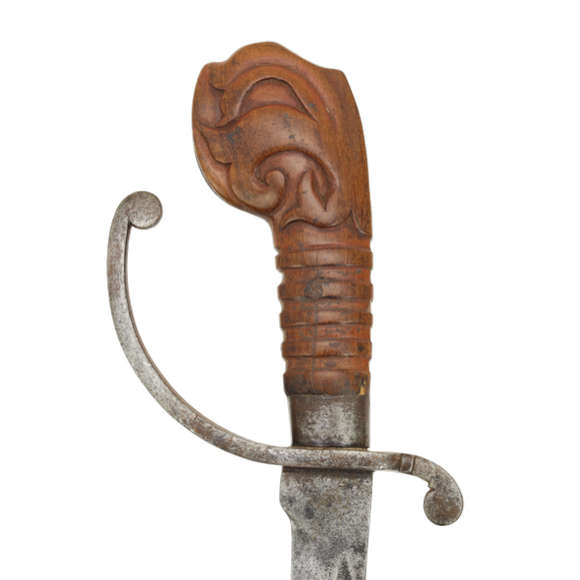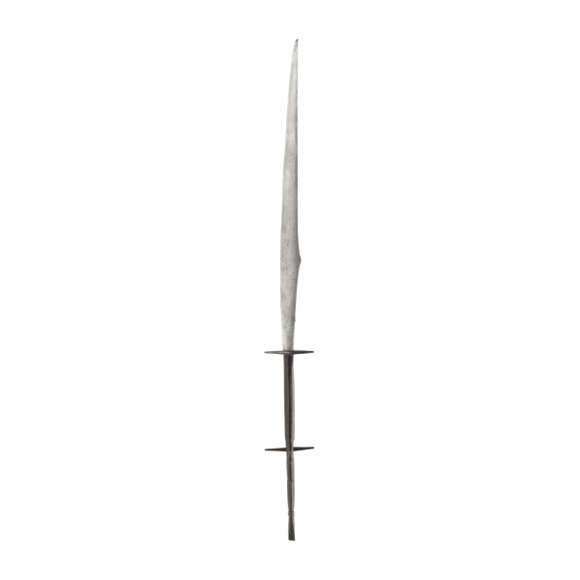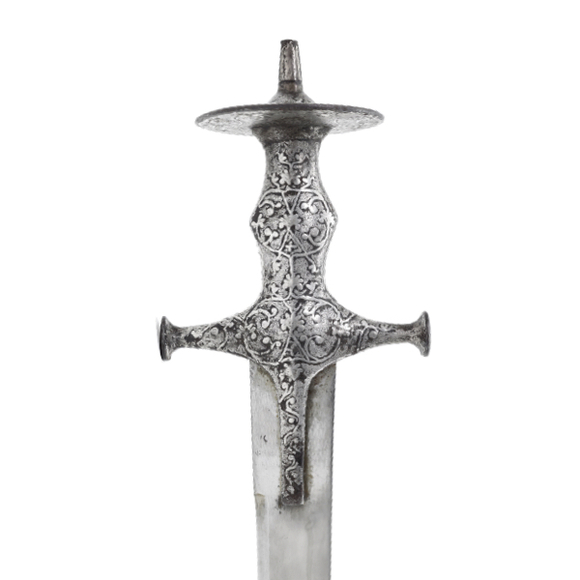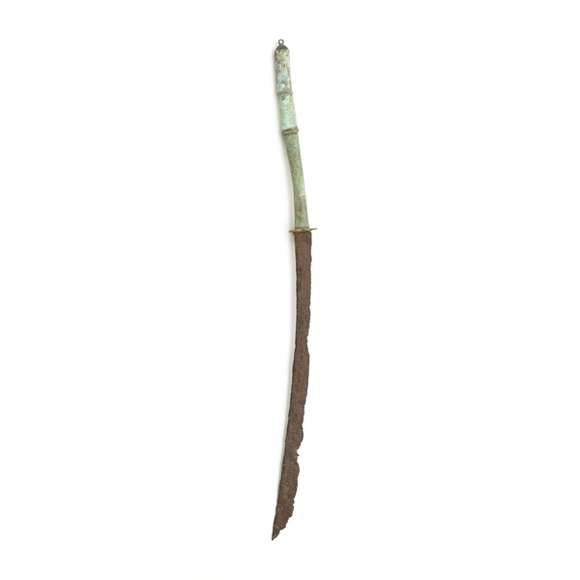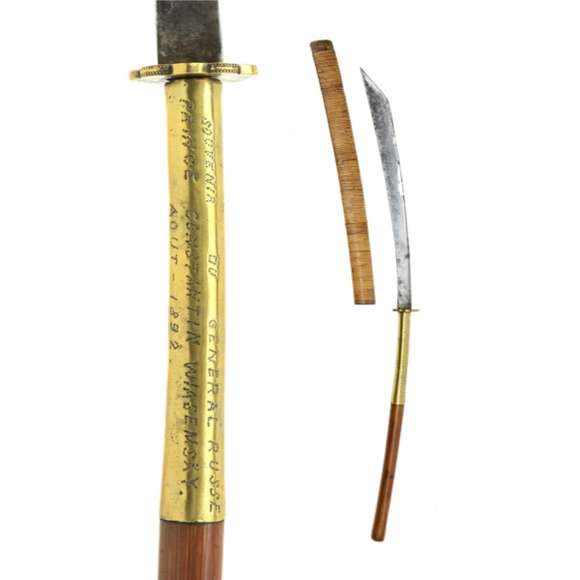The saber is called loho in Manchu. Various old dictionaries give terms for the different parts of the saber. For this glossary, I used a five language dictionary published around 1790.1
It misses some important terms like those for blade and grip, which I will later add from a Kangxi period dictionary.

Loho
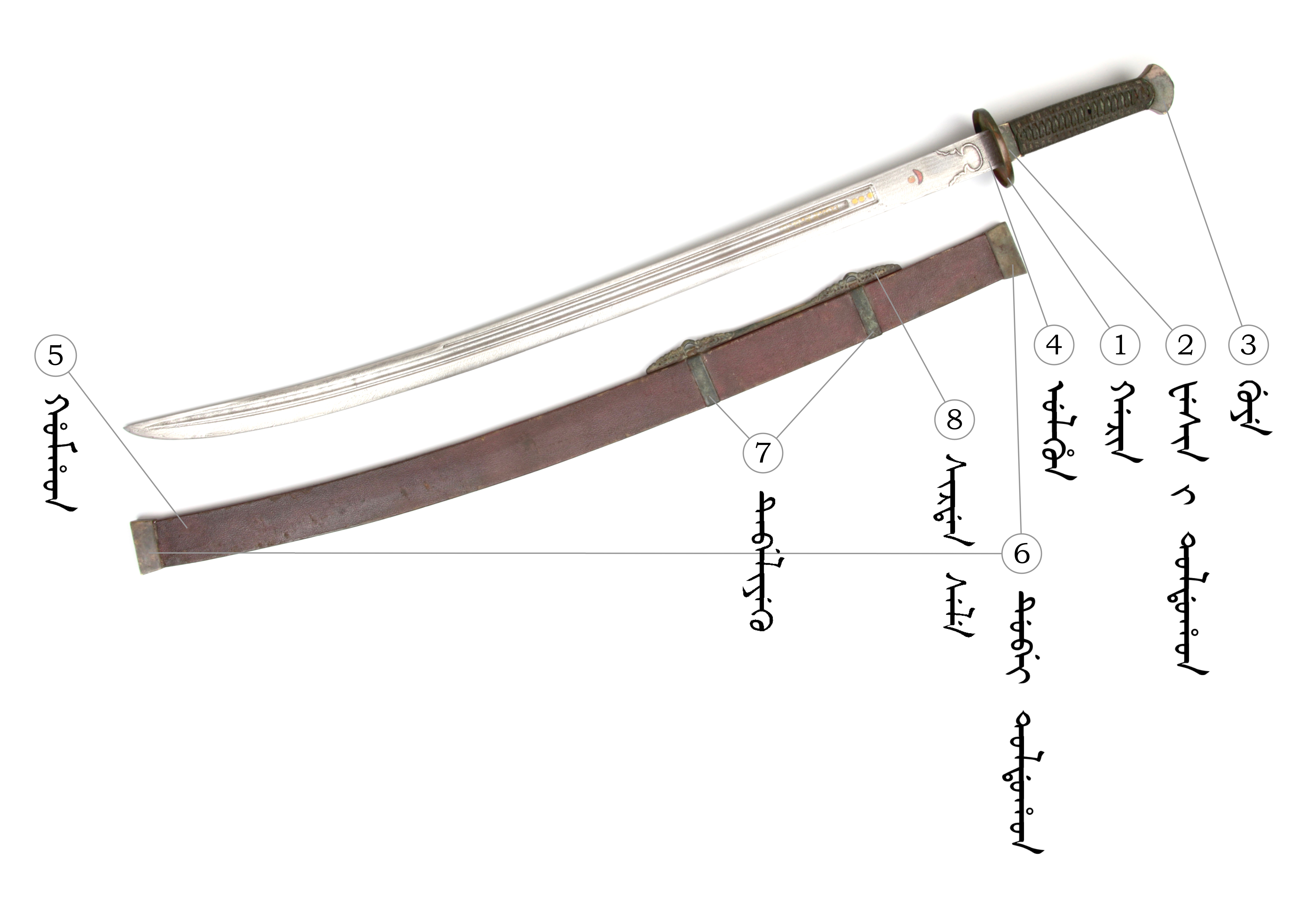
|
# |
English |
|
Manchu (Möllendorff transliteration) |
|
|
|
|
|
| 1 |
Guard |
garin | |
| 2 |
Ferrule |
guye | |
|
3 |
Pommel |
fesin-i toldohon | |
|
4 |
Collarpiece |
ulhun | |
|
5 |
Scabbard |
homhon | |
| 6 |
Scabbard end pieces |
dubei toldohon | |
| 7 |
Suspension bands |
tebeliyeku | |
| 8 |
Suspension bar |
sirdan sele | |
|
Saber lanyard |
turu | ||
|
Washer at tang end |
anggûta |
As a downloadable image.
Other saber related terms
The terms are from a 1704 Chinese-Manchu dictionary. 2
G'angga loho: Steel saber
Boobai loho: Precious saber
Jeyen: Saber point
Gencehen: Saber back
Jafakū: Saber handle
Kuhen: Saber groove
Muheren: Saber ring
Ulikū: Saber drawing hand
Toldohon: Saber hilt bands
Jeyen sendejehe: Saber edge collapsed
Jeyen nitarkan: Saber edge rolled up
Sebdekehe: Saber surface rusted
Mersenehe: Saber surface patterned
Sacimbi: Chop with a saber
Gencehelembi: Strike with back of saber
Goqimbi: Pull saber
Qulhūmbi? Qolhūmbi?: Brandish saber
Maksimbi: Raise saber
Lumbi?: Play with saber
Homholombi: Insert saber
Erhelembi: Pull saber
Oksibumbi: Shed the scabbard
Hatambi: Dip the point
Notes
1. Terms are taken from the Wuti Qingwen Jian (五體清文鑑) or "Five languages compendium", a Qing imperial dictionary in Manchu, Mongolian, Uighur, Tibetan and Chinese of circa 1790.
2. Tóng wén guǎng huì quánshū (同文广汇全书). A Qing imperial dictionary of Manchu and Chinese of 1704.


